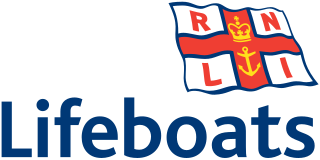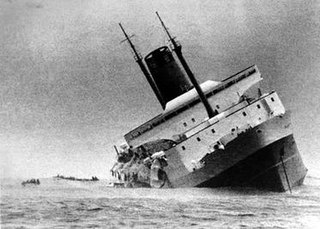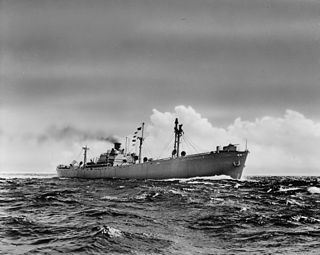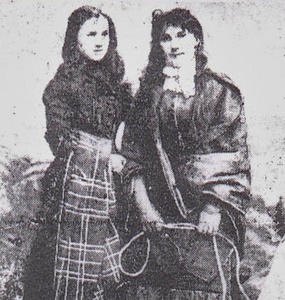Related Research Articles

Mumbles is a headland sited on the western edge of Swansea Bay on the southern coast of Wales.

The Royal National Lifeboat Institution (RNLI) is the largest charity that saves lives at sea around the coasts of the United Kingdom, the Republic of Ireland, the Channel Islands, and the Isle of Man, as well as on some inland waterways. It is one of several lifeboat services operating in the same area.

Porthcawl is a town and community on the south coast of Wales in the county borough of Bridgend, 25 miles (40 km) west of the capital city, Cardiff and 19 miles (31 km) southeast of Swansea. Historically part of Glamorgan and situated on a low limestone headland on the South Wales coast, overlooking the Bristol Channel, Porthcawl developed as a coal port during the 19th century, but its trade was soon taken over by more rapidly developing ports such as Barry. Northwest of the town, in the dunes known as Kenfig Burrows, are hidden the last remnants of the town and Kenfig Castle, which were overwhelmed by sand about 1400.

TEV Wahine was a twin-screw, turbo-electric, roll-on/roll-off ferry. Ordered in 1964, the vessel was built by the Fairfield Shipbuilding and Engineering Company, in Govan, Glasgow, Scotland for the Union Steam Ship Company's Wellington-Lyttelton Steamer Express Service in New Zealand. The ship's name, Wahine, is a word for 'woman' in some Polynesian languages, including Māori.
The Margate surfboat refers to three surfboats used for maritime rescue at Margate, on the eastern tip of Kent. They were run as cooperatives, with local boatmen clubbing together to buy them and then receiving a share of any salvage money received.
MV Princess Victoria was one of the earliest roll-on/roll-off (ro-ro) ferries. Completed in 1947, she operated from Stranraer to Larne. During a severe European windstorm on 31 January 1953, she sank in the North Channel with the loss of 135 lives. This was then the deadliest maritime disaster in United Kingdom waters since World War II. For many years it was believed that 133 people had lost their lives in the disaster, but research by local historian Liam Kelly JP, DL, identified two other victims - Gordon Wright and Thomas Saunders - whose names had not been identified as there had been no ship's passenger list at the time.

Lizard Point in Cornwall is at the southern tip of the Lizard Peninsula. It is situated half-a-mile (800 m) south of Lizard village in the civil parish of Landewednack and about 11 miles (18 km) southeast of Helston.

SS Samtampa was a 7,219 ton steamship wrecked on Sker Point, off Porthcawl and Kenfig, Wales, in the Bristol Channel on 23 April 1947. At the time of the shipwreck, the Samtampa was operated by the Houlder Line.

The Grade II listed structure of Mumbles Pier is an 835 feet (255 m) long Victorian pier built in 1898. It is located at the south-western corner of Swansea Bay near the village of Mumbles, within the city and county of Swansea, Wales.

Sker Point is a headland in Bridgend County Borough on the South Wales coast between Port Talbot and Porthcawl. It marks the south end of Kenfig Sands. The placename Sker is of Old Norse origin, and means skerry.

SS Tararua was a passenger steamer that struck the reef off Waipapa Point in the Catlins on 29 April 1881, and sank the next day, in the worst civilian shipping disaster in New Zealand's history. Of the 151 passengers and crew on board, only 20 survived the shipwreck.
The Kingstown lifeboat disaster occurred on Christmas Eve 1895 off Kingstown, Ireland, when the Kingstown lifeboat was capsized while attempting to rescue the crew of the stricken SS Palme. The crew of fifteen were lost. The event is commemorated annually at Dún Laoghaire Harbour.

The Mumbles is a district of Swansea, Wales, located on the south-east corner of the unitary authority area. It is also a local government community of the same name. At the 2001 census the population was 16,774, reduced slightly to 16,600 at the 2011 Census. The district is named after the headland of Mumbles, located on its south-east corner.

The Mumbles Lifeboat Station opened in 1835 with a lifeboat that was funded and managed by Swansea Harbour Trustees and was known as Swansea Lifeboat Station. The station was taken over by the RNLI in 1863 and moved to Mumbles in 1866. The station only officially became The Mumbles Lifeboat Station in 1904.
Empire Dryden was a 7,164 GRT cargo ship that was built in 1941 by William Doxford & Sons Ltd, Sunderland, Co Durham, United Kingdom for the Ministry of War Transport (MoWT). Completed in February 1942, she had a short career, being torpedoed and sunk on 20 April 1942 by U-572.

Jessie Ace (1860–1936) and Margaret Wright are known for their rescue of crewmen from the Mumbles lifeboat, which had gone to assist a wrecked German barque during an 1883 storm at Mumbles Head, Wales.

All Saints' Church, Oystermouth is an Anglican church in the diocese of Swansea and Brecon, south Wales. It is located in Mumbles and is a Grade II listed building The church stands on a hillside, not far from Oystermouth Castle.
SV Nominoé was a French sailing ship that ran aground near Blankenberge, Belgium during a violent storm while she was travelling from London, United Kingdom to Swansea, Wales, United Kingdom with a cargo of asphalt.
References
- 1 2 3 "Tribute for 1947 Mumbles disaster". BBC. 23 April 2007. Retrieved 27 July 2016.
- ↑ Robin Turner (9 May 2014). "Mumbles lifeboat disaster of 1947: Memorials to lifeboatmen repaired free of charge". WalesOnline. Retrieved 12 March 2019.